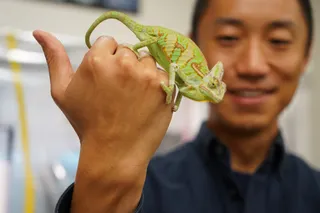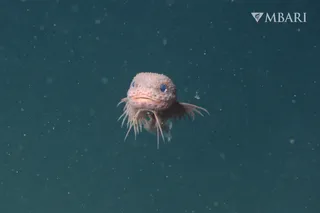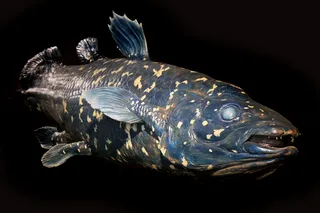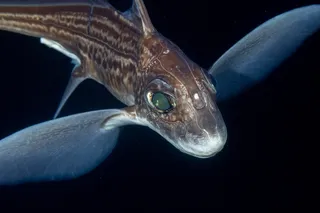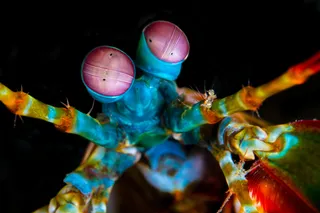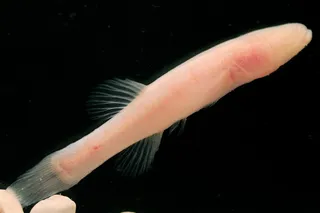People keep sending me links to stories about Craig Venter's new "synthetic cell." So let's talk about it.
(By the way, I do like it when people alert me to interesting science stories, and I often put them in the magazine. If my coworker hadn't alerted me to it, I never would have known about the recent wedding in Japan that was officiated by a robot. But if the headline is "Major Breakthrough Announced in Science Magazine and Every Other News Outlet!" then I've probably seen it already.)
This particular story definitely has a case of the inflamed headlines. To be fair, Craig Venter started it--probably around the time when he called his creation "the first self-replicating species we've had on the planet whose parent is a computer."
OK, so what is it really?
Venter's team, to start with, created the longest-ever chunk of synthesized DNA: over 1 million base pairs. They did it by ordering a bunch of smaller DNA pieces, each 1000 base pairs long, from a company that custom-synthesizes it. (There's a catalog that must be dull to shop in: "I'll take the AAAAGTCCCTTCCCGCCC in 'colorless.'") Venter's team painstakingly stitched together these pieces in stages until they had the entire million-base-pair genome they wanted.
Incidentally, the way you cut and paste genes is not with, like, extremely small tweezers, or fancy machines. You need enzymes (which aren't manmade) to do the cutting, and other microorganisms, such as yeast and E. coli, to do the gluing back together. So the resulting genome might be synthetic, but the tools aren't.
The final genome was not written from scratch. It was the genome of a bacterium called Mycoplasma mycoides. The scientists did make a few edits. They deleted a handful of genes and added some non-functional "watermarks" in code, including a James Joyce quote: "To live, to err, to fall, to triumph, to recreate life out of life." (Oooh.)
Finally, they inserted this modified genome into an emptied-out cell from another, similar bacterium (Mycoplasma capricolum). They found that the new bacterium, which has the cute nickname "Synthia," successfully lived and replicated itself.
This is a cool project, and demonstrates that you can create synthetic genomes and boot them up. But it's not exactly life from scratch: the cell itself, and the text of the genome, belonged to pre-existing species.
One more note about those "watermarks." They're handy in that they allow you to prove that the bacterium you're looking at is the one you manufactured, and not a naturally occurring one. They also make it easier to claim a genome as your own intellectual property. Craig Venter is interested in patenting DNA sequences, and he's not the only one. That's right: genes that you currently have in your body might be someone else's intellectual property. Not to mention genes that more than one lab might want to study so they can, you know, cure diseases.
Just this March, a U.S. District Court overturned patents held by a company called Myriad on BRCA1 and BRCA2, genes that can predispose women to breast or ovarian cancer. The patents, which the company actively enforced, meant that only Myriad could perform a diagnostic test to tell a woman her likelihood of those cancers. They charge more than $3,000 to do so. Maybe you've seen their ads on TV: "BRAC Analysis: Be Ready Against Cancer!"
No, I didn't make a typo. Yes, they changed the name of the gene so it made a kicky acronym. Thank goodness we're custom-making bacteria now. Soon they can have their own cute, easily marketable names!
P.S. Here are a bunch of actual scientists talking about Craig Venter's synthetic cell.



